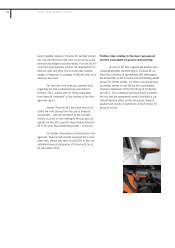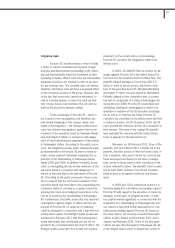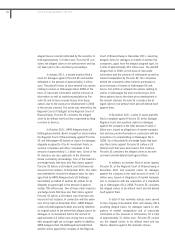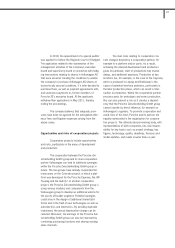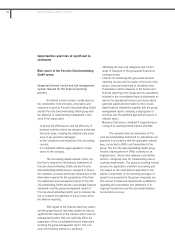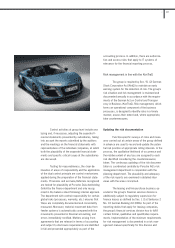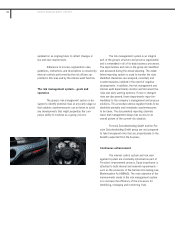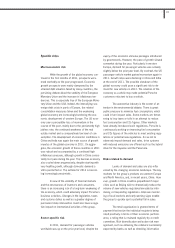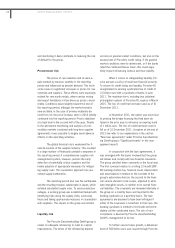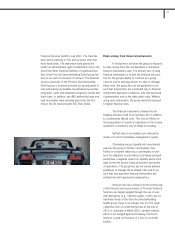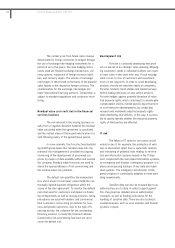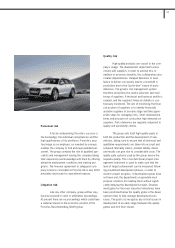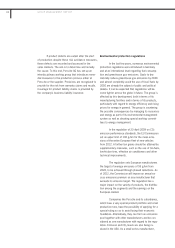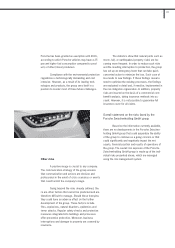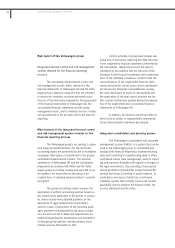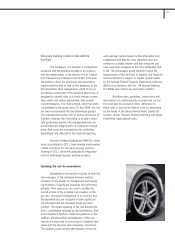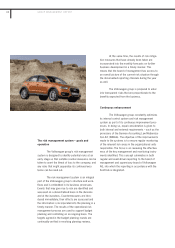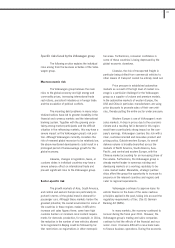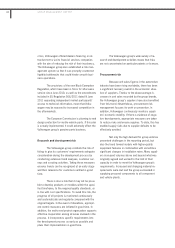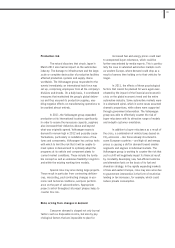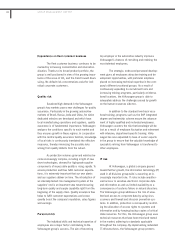Porsche 2011 Annual Report Download - page 112
Download and view the complete annual report
Please find page 112 of the 2011 Porsche annual report below. You can navigate through the pages in the report by either clicking on the pages listed below, or by using the keyword search tool below to find specific information within the annual report.
The currency risk from future sales revenue
denominated in foreign currencies is hedged through
the use of exchange rate hedging instruments for a
period of up to five years. The main hedging instru-
ments used are forward exchange transactions, cur-
rency options, repayment of foreign currency liabili-
ties, and currency swaps. The volume of exchange
rate hedges is determined on the basis of the planned
sales figures in the respective foreign currency. The
counterparties for the exchange rate hedges are
major international financing partners. Cooperation is
subject to standard regulations and continuous moni-
toring.
Residual value and credit risk in the financial
services business
The risk inherent in the leasing business re-
sults from a negative deviation between the residual
value calculated when the agreement is concluded
and the market value of the leased vehicle when it is
sold following expiry of the agreed lease period.
In some markets, the Porsche Zwischenhold-
ing GmbH group bears this residual value risk. Op-
erational risk management is provided via ongoing
monitoring of the development of pre-owned car
prices by means of data available within and outside
the company. Residual value forecasts are used to
check the appropriateness of risk provisioning and
the residual value risk potential.
The default risk quantifies the unexpected
loss which arises if a borrower cannot fulfill the con-
tractually agreed payment obligations within the
scope of the loan agreement. To monitor the default
risks that exist for customers and dealers in financ-
ing arrangements as well as leasing business, rating
procedures are used with dealers and commercial
fleet customers, and scoring procedures for busi-
ness and private customers. Due to the type of fi-
nancing activity, the collateral for the outstanding
financing volumes is mainly the financed vehicles.
Conservative risk provisioning has been set up to
cover the default risk.
Development risk
Porsche is constantly developing new prod-
ucts in pursuit of its strategic sales planning. Misjudg-
ing customers’ needs in individual markets can result
in lower sales in the short term and, if such misjudg-
ments recur, to loss of customers and investment
errors in the long term. In order to avoid developing
products that do not meet the needs of consumers,
Porsche conducts trend studies and market surveys
before making decisions on new vehicle projects.
Porsche hedges against potential breaches of indus-
trial property rights, which could lead to considerable
compensation claims, market-specific export barriers
or cost-intensive redevelopments, by conducting
research into worldwide industrial property rights
when developing new vehicles. In this way, it is possi-
ble to quickly identify whether the industrial property
rights of third parties are affected.
IT risk
The failure of IT systems can cause consid-
erable losses if, for example, the production of vehi-
cles is interrupted. Apart from a systematic analysis
and monitoring of potential risks relating to informa-
tion and information systems based on the IT blue-
print coupled with the associated information systems,
an emergency and disaster contingency program is in
place encompassing backups of key data and redun-
dant systems. The emergency and disaster contin-
gency program is continuously adapted to meet oper-
ating requirements.
Sensitive data can also be misused due to un-
authorized access to data. In order to guard against
this, the group has detailed access authorization
concepts, as well as binding instructions for the
handling of sensitive data. There are also technical
countermeasures such as virus scanners and firewall
systems in place.
GROUP MANAGEMENT REPORT112


